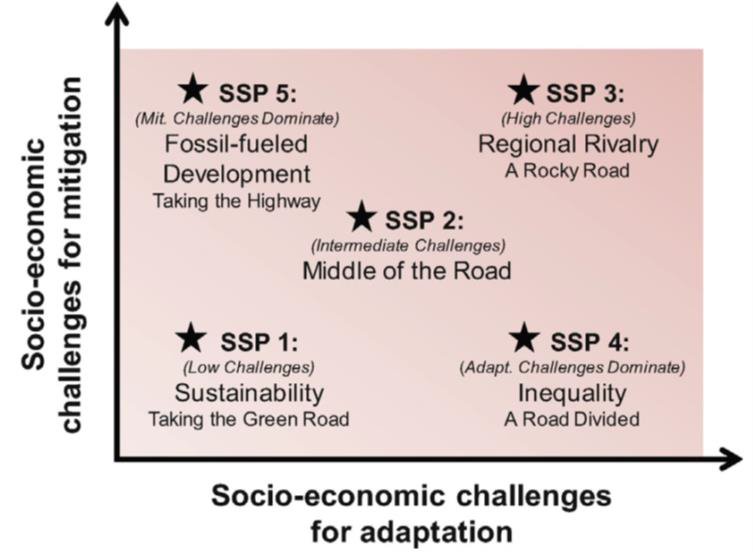
A JRC analysis of climate change and global agriculture looks to 2050 and provides valuable insights for a sector that will feel the heat from climate change – as well as from policies combatting climate change.
Agriculture plays a key role in the EU: farmers produce safe, high quality food, they look after the natural landscape and preserve the vitality of our countryside.
Globally, the sector faces two related challenges: on the one hand, it is directly affected by climate change; on the other, there is a need to reduce agricultural greenhouse gas emissions to achieve global climate targets.
Researchers are already grappling with the relationship between climate change, mitigation measures and agriculture. When analysing impacts, however, different agro-economic models can present quite different results.
Therefore, JRC scientists focused on harmonising key model inputs and comparing what drives the model outcomes.
Specific insights so far include highlighting vulnerabilities, changes in production, price and trade effects. Initial findings of the work include:
- Already by 2050, climate change may start to have limited but noticeable impacts on agricultural yields (yield increases are 2.5% lower than without climate change, as a global average across the models applied in the study), with more acute effects in regions more heavily impacted by climate change.
- If impacts of climate change on crop yields are limited and the assumptions behind the socioeconomic pathways used in the modelling hold, then the impact of mitigation policies on global production (i.e. more limited increase) and prices (i.e. higher increase) could actually be more important than the negative climate change impacts by 2050. However, this is partially due to the limited impact of the climate scenarios by 2050.
- Climate mitigation policies designed to achieve a 2°C target by the end of the century - such as carbon pricing - are likely to have a higher negative impact on livestock than crop production, due to livestock activities being more emission intensive (i.e. higher carbon footprint).
- Up to 2050, demand for agricultural production will be more influenced by population and dietary choices than by economic growth.
- The study focuses only on global impacts and in-depth analysis is necessary to identify regional vulnerabilities, and to help specify adaptation and mitigation strategies for regional agricultural sectors.
Sustainable agriculture features prominently in the climate commitments – including those of the European Union – made under the landmark Paris Agreement, which saw parties agree to take climate action to keep the average global temperature rise to well below 2°C by the end of the century.
Policymakers need to know the likely effects that climate change and potential mitigation measures could have on all sectors including agriculture, in order to make effective choices.
The JRC study assesses a range of potential impacts of climate change and mitigation measures on the agricultural sector.
It applies potential global future socio-economic narratives ranging from increased international cooperation, technological and economic growth, to regional rivalry and international fragmentation.
It also looks at factors such as the sustainability concerns of citizens and features like land use and food demand preferences.

A set of 5 global multi-region, multi-commodity economic models were used. Using different models and scenarios helps to explore a wide range of potential impacts, uncertainties, and the effects of data and methodological choices.
Model inputs were harmonised by using the same projections for population and GDP growth, as well as relative biophysical crop yield changes due to climate change.
The results of the study highlight the importance of careful climate mitigation policy design in the agricultural sector. The study is a further step towards a better understanding of the economic impacts of climate change and mitigation on global agriculture.
It provides a basis for further research to clarify different results across models and to further harmonise the input storylines, specifically regarding mitigation policies.
For example, detailed regional studies could help identify vulnerabilities, adaptation and mitigation possibilities for regional agricultural sectors.
JRC and the AgMIP project
The JRC study builds a solid basis for further model improvements and detailed analysis of climate change impacts at regional level. Such insights are vital for effective and efficient public and private sector decision making.
The JRC study contributes to a wider project, the Agricultural Model Intercomparison and Improvement Project (AgMIP), a major international collaborative effort to improve climate scenario simulation and to understand climate impacts on the agricultural sector at global and regional scales.
Multiple crop and agricultural economic modelling groups around the world participate in AgMIP for model inter-comparison and the simulation and analysis of future climate change conditions.
AgMIP is establishing research standards for the evaluation of agricultural models and modelling results across regions and models.
AgMIP aims to significantly enhance information to guide policymakers regarding risk of hunger, world food security, and agricultural adaptation, under a changing climate.
Related Content
The Agricultural Model Intercomparison and Improvement Project (AgMIP)
Details
- Publication date
- 23 November 2017
